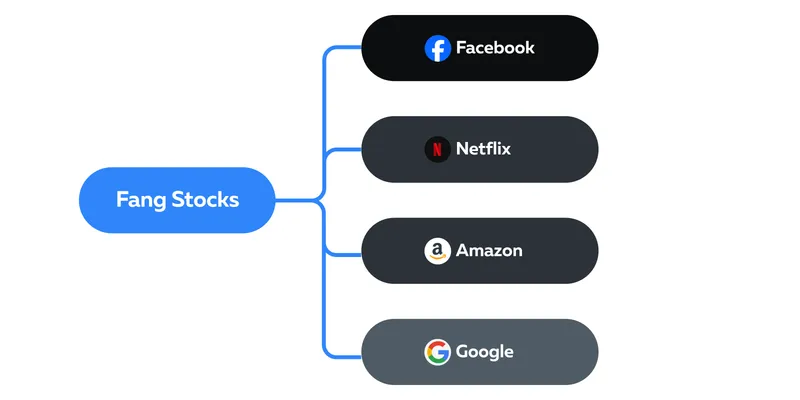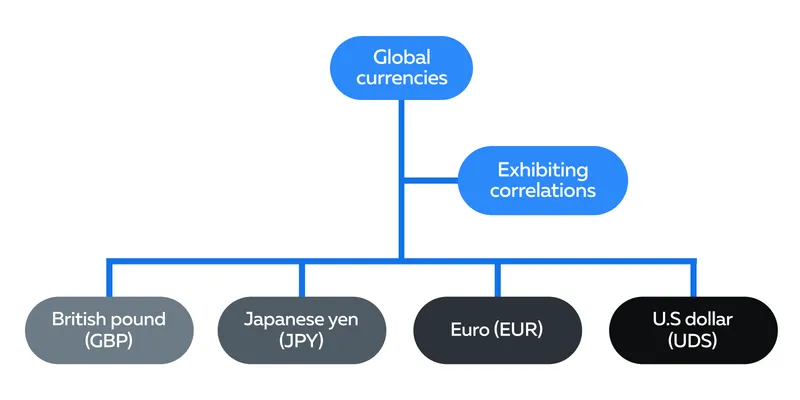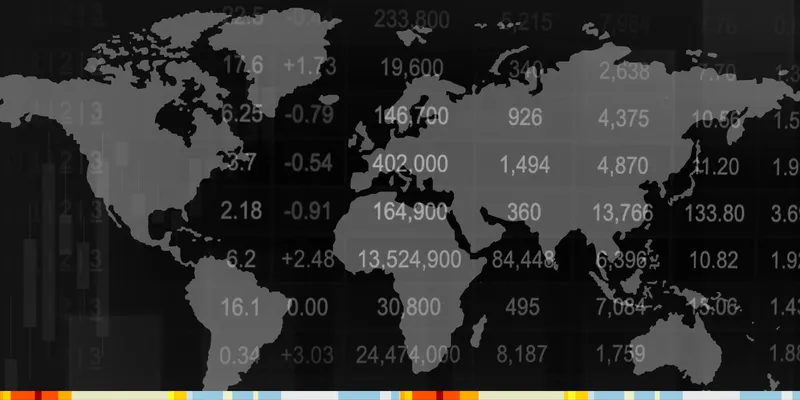

December Trading
Deals Are Live!
Save on Global+, data access,
and add-ons.
See All December Deals

Black Friday
Nov 28-Dec 31
26 days : 8 hours
50% OFF Global+ Quarterly
+ 50% OFF Data (3 months)

Cyber Monday
Dec 1 - Dec 31
26 days : 8 hours
60% OFF Global+ Monthly
+ Data (1 month)

Add-on Deals
Dec 1 - Dec 31
26 days : 8 hours
50% OFF
Add-ons

New Year Sale
Dec 26 - Jan 1
20 days : 8 hours
30% OFF Global+ Lifetime
*Data not included
Education
December 25, 2024
SHARE
Trading Around the World: Key Differences in Global Markets
If you want to be a successful global trader, the exciting world of global
finance is calling you. In this article, you will delve into the intricacies
of global trading and understand the diverse characteristics of financial
hubs like Wall Street, London, and Tokyo.
Furthermore, you will uncover how traders adeptly manage currency
fluctuations, navigate diverse time zones, and stay abreast of international
news. Armed with strategies, insights, and invaluable tips, you will be
well-prepared to thrive in the dynamic and ever-evolving landscape of global
trading. Let’s get started.
Global Financial Hubs: A Closer Look
The world of finance is an interconnected network where key financial hubs
serve as the epicenters of global economic activity. Each of these hubs has
its market characteristics, regulatory landscapes, and impacts on the global
financial ecosystem.
Let’s take a closer look at some of the most influential financial centers,
such as Wall Street in the United States, the London Stock Exchange in the
UK, and the Tokyo Stock Exchange in Japan.
Wall Street (U.S.A)
Wall Street is a global financial powerhouse, comprising numerous
institutions and markets that collectively influence the world’s economy. At
its core, Wall Street is anchored by two major stock exchanges:
-
The New York Stock Exchange (NYSE)
-
The NASDAQ
|
The New York Stock Exchange (NYSE) |
The NASDAQ |
|
|
The combined influence of these exchanges makes the U.S. the largest global
financial market. This prominence is further accentuated by the dominance of
big-tech stocks, particularly the FANG stocks:

Characteristics of FANG Companies
-
The FANG companies possess substantial market capitalizations.
-
Each of them is a major player in their respective industry.
-
Collectively, their market capitalization amounts to trillions,
underscoring their significant influence on broader market trends. -
For example,
-
Positive or negative movements in FANG stock prices often
trigger a ripple effect across the market. -
This is due to their extensive reach and impact on various
sectors.
-
What is the Federal Reserve?
The Federal Reserve, commonly known as the Fed, functions as the central
banking system in the United States, with a pivotal role in the following
areas:
-
Formulating monetary policy
-
Overseeing economic regulations
-
Managing interest rates
The decisions made by the Federal Reserve hold substantial sway, impacting
not only domestic markets but also the global financial landscape. To
illustrate, consider the following example:
On November 1st, 2023, the
Fed paused hikes on interest rates
. This signaled a relaxation of monetary policy, subsequently leading to an
upsurge in stock markets as borrowing costs for businesses became more
affordable. This example underscores the far-reaching consequences of the
Federal Reserve’s actions on both domestic and global financial spheres.
London Stock Exchange (U.K.)
London, historically known as a financial epicenter, has a rich legacy of
global trade and commerce. The London Stock Exchange (LSE) is a pivotal part
of this legacy, serving as a key hub for international investors and
businesses.
The FTSE
-
The FTSE 100 is an index comprising the hundred largest companies
listed on the LSE. -
At the close on October 27th, 2023, the
top five companies
listed on FTSE are:-
Shell
-
AstraZeneca
-
BHP Group Ltd.
-
HSBC Holdings, and
-
Unilever
-
-
The hundred FTSE-listed companies represent a significant portion of
the UK market. -
These companies span various sectors, including finance, energy, and
consumer goods, and play a substantial role in the British economy.
The Brexit Impact
Brexit, the 2016 referendum where the UK voted to leave the European Union,
significantly impacted both the UK and European markets. This situation
created several uncertainties, such as:
-
Potential trade implications, and
-
Economic changes
During the lead-up to the referendum and afterward, the pound sterling
experienced fluctuations, and certain sectors, particularly finance, faced
uncertainties about their future relationships with the EU.
Tokyo Stock Exchange (Japan)
The Tokyo Stock Exchange (TSE) embodies a distinctive fusion of traditional
values and cutting-edge technology. Japan boasts robust manufacturing and
tech sectors, with household names like Sony, Toyota, Nintendo, and
Panasonic exemplifying its global presence and technological innovation.
The Bank of Japan
-
The Bank of Japan (BOJ) governs monetary policies and plays a
pivotal role in the country’s economic landscape. -
Notably, the “Abenomics” policy was introduced with the goal of
reinvigorating Japan’s economy through a three-pronged strategy,
which includes:
-
Implementing monetary easing
-
Enacting fiscal stimulus measures
-
Undertaking structural reforms
-
This multifaceted approach sought to break Japan free from
deflationary pressures, stimulate growth, and improve the overall
economic landscape.
Japan’s market dynamics, tech innovation, and the Bank of Japan’s economic
policies have made the Tokyo Stock Exchange a crucial hub for global
investors.
Diverse Characteristics of Global Markets

Global markets have diverse characteristics with different trading hours,
unique regulatory landscapes, and varying sensitivities to both local and
global events. Let’s understand them.
Trading Hours and Their Impact
The global market operates in a continuous 24-hour cycle, facilitated by
different time zones across the world. This continuous cycle means that
events in one market can significantly influence the opening sentiments of
another. For instance, news or policy changes occurring in one market before
its close affect investor sentiments and impact how another market opens.
Let’s understand this interconnectedness through a hypothetical example.
-
The U.S. Federal Reserve announces a significant interest rate hike
or cut during its trading hours. -
This news creates ripples in the U.S. market, affecting investor
sentiments and influencing market futures. -
As Asian markets begin trading while the U.S. is closed, they react
to this news. -
A major shift is visible in stock prices or market indices at their
opening. -
This shift is a reflection of the sentiment established by the U.S.
policy change.
Regulatory Landscapes
Each financial market operates under its unique regulatory body and set of
rules. These regulations may either draw in or turn away foreign investors,
depending on the level of:
-
Transparency
-
Ease of doing business
-
Investor protection offered.
For example,
Let’s compare the IPO regulations in the U.S. and the U.K. through the table
below.
|
Parameters |
IPO regulations in the U.S. |
IPO regulations in the U.K. |
|
Level of Strictness |
The U.S. Securities and Exchange Commission (SEC) has |
The U.K.’s regulatory body, the Financial Conduct |
|
Cost-effectiveness |
The process involves thorough disclosure requirements, |
The process has fewer stringent requirements, making it |
|
Degree of Investor Protection |
Stringent regulations foster investor confidence and |
A streamlined process is perceived as having lesser |
Sensitivity to Local and Global Events
A combination of internal events specific to a country or region and broader
global occurrences can significantly influence local markets. These internal
events have a deep impact on the local markets:
-
Political instability
-
Changes in government policies
-
Economic indicators, or
-
Corporate developments
Also, several global events, such as international relations, geopolitical
tensions, trade agreements, or significant economic shifts, impact the local
markets. Let us understand this better with an example.
-
The U.S.-China trade war is a prime example of how global events can
impact various markets. -
Tensions between the two economic powerhouses led to tariffs and
trade restrictions, which created uncertainty in global trade. -
Companies that heavily rely on imports or exports between the U.S.
and China experienced market volatility. -
The stock markets worldwide were sensitive to swings in:
-
Commodity prices
-
Currency fluctuations, and
-
Changes in global supply chains
-
How Do Festive Seasons and Holidays Impact Local Trading Volumes?
Festive seasons and local holidays impact trading volumes in specific
markets. During these periods, market activity slows down due to reduced
participation from traders and investors. This reduced activity can lead to
lower trading volumes and, at times, increased volatility due to thinner
liquidity.
For example,
-
In various Asian markets during Chinese New Year, trading activity
decreases significantly. -
This happens as markets in countries like China, Hong Kong, and
Singapore observe extended holidays. -
The reduced participation leads to lesser liquidity, which
ultimately impacts stock prices and market movements during that
period.
Tips for Global Traders
When trading internationally, currency conversion risk is a critical
consideration. Traders often face uncertainty due to fluctuations in
exchange rates. Strategies to hedge against currency risk involve using
financial instruments like forward contracts, options, or futures to manage
exposure.
Let’s understand the concept of hedging through this example.
-
A U.S. trader is expecting to receive euros.
-
They anticipate the euro weakening against the dollar.
-
To address this, they opt for a forward contract to exchange euros
for dollars at a predetermined rate in three months, effectively
mitigating uncertainty surrounding future exchange rates.
Understanding the Currency Correlation

Major global currencies, including the U.S. Dollar (USD), Euro (EUR),
Japanese Yen (JPY), British Pound (GBP), and others exhibit
correlations
and frequently influence each other. It’s vital to comprehend these
relationships.
For instance,
-
A stronger dollar can impact commodities and emerging market
currencies. -
Conversely, a weaker dollar may bolster commodity prices.
-
Monitoring these correlations proves instrumental in anticipating
market movements.
Navigating Through Time Zones
To effectively manage trades across time zones, establishing a routine that
aligns with market opening and closing times is crucial.
For instance,
-
Traders operating in multiple regions, such as European and Asian
markets, might design a schedule that accommodates both. -
This may involve:
-
Waking up early to catch the closing hours of Asian markets and
-
Staying up late to observe the opening hours of the European
markets.
-
Some Proven Strategies for Traders
-
Maintain a visual calendar with market timings
-
Highlight key economic events
-
Prioritize markets on days with major announcements or expected
volatility
These approaches enable traders to stay abreast of significant trading
opportunities and adjust their strategies to optimize their presence in
various markets.
Staying Updated with International News
Remaining up to date with global economic and political news is paramount
for global traders. Trusted international news sources such as Bloomberg,
Reuters, BBC Business, and the Financial Times offer timely insights into:
-
Major economic announcements
-
Central bank decisions
-
Geopolitical events impacting global markets.
These sources provide comprehensive coverage and help traders make informed
decisions based on evolving global developments. Additionally, global
traders should also consider additional sources, such as CNBC, The Wall
Street Journal, and international business sections of major newspapers or
news websites.
Conclusion
Actions in one corner can send ripples across the entire system. The global
financial landscape is vast and comprises different interconnected markets.
This interdependence is evident through the impact of international events,
policy changes, and economic shifts on markets worldwide.
To gain success, global traders must continuously learn and adapt. They must
remain vigilant, keeping a finger on the pulse of international news,
economic indicators, and geopolitical events.
For traders wanting to understand how global economic events can shift the
very pulse of markets, delve deeper into our article on
how economic events impact order flow
. This guide will equip you with valuable insights to navigate the ebbs and
flows of market fluctuations with confidence.
